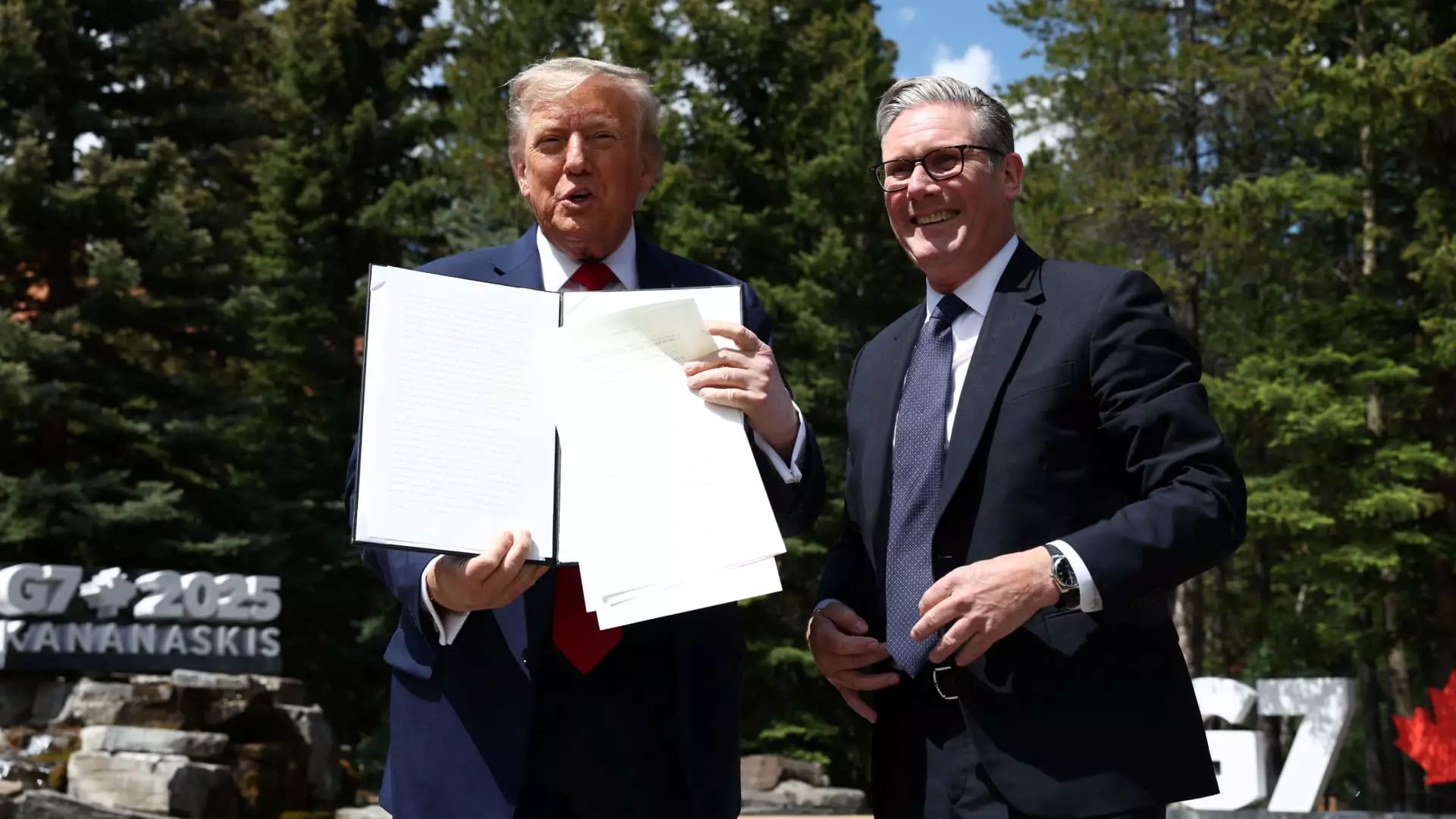In recent months, the narrative surrounding U.S. trade policies has been painted with the brush of hope. The White House has touted a series of seemingly positive trade agreements despite a turbulent backstory marked by aggressive tariffs and diplomatic uncertainties. Wall Street has responded with enthusiasm, sending the stock market soaring to record heights, leading many to believe that the worst of the trade war is behind us. However, beneath this veneer of stability lies a precarious foundation fueled by political brinkmanship, legal ambiguities, and incomplete agreements. The reality is that the supposed trade “progress” masks an underlying instability that could destabilize the economy more profoundly than most investors realize.
The Mirage of Finalized Deals
A closer look at the so-called agreements with nations like Indonesia, the Philippines, Japan, and South Korea reveals a pattern of incomplete negotiations and vague commitments. Trump’s administration often announces deals prematurely, projecting an image of accomplishment that is not backed by detailed, enforceable terms. This overconfidence is problematic because these deals remain susceptible to collapse if countries perceive that the agreements favor U.S. interests too heavily or are unbalanced. European Union negotiations serve as a prime example—initially portrayed as promising, only to be met with skepticism and criticism from European policymakers. Such dissonance indicates that many of these arrangements are fragile promises rather than solidified alliances.
Moreover, the absence of clarity about tariffs and trade terms leaves the door wide open for renegotiation or outright abandonment. Without transparent specifics, the international trading community remains cautious, and markets are left exposed to the risk of sudden reversals. The lack of finalized agreements with major partners like Canada, Mexico, and China exacerbates this uncertainty, highlighting that the U.S. approach is more about political showmanship than strategic, sustainable trade policies.
The Legal Quagmire and the Sovereign Fragility
A central element of this fragile situation is the legal challenge surrounding Trump’s tariff authority. The use of the International Emergency Economic Powers Act of 1977 (IEEPA)—a law designed for national emergencies—has come under scrutiny in federal courts. Skeptics question whether the president overstepped his constitutional powers, and some legal analysts believe a court ruling against Trump could invalidates these tariffs altogether. Such a judicial decision could erase months of effort, forcing the U.S. to return to the drawing board and sow further chaos in global markets. The looming possibility of a legal reversal underscores just how unstable and politicized the current trade policies are.
Furthermore, Trump’s willingness to explore alternative legal avenues, such as the Tariff Act of 1930, reveals a strategic, if risky, play to keep tariffs alive regardless of judicial outcomes. This legal chess game signifies a broader shift toward authoritarianism in trade policy—one that disregards legal norms and international consensus in favor of executive fiat. For investors and global partners alike, this unpredictability fuels suspicion and might damage the credibility of U.S. commitments in the long run.
The “Trump Factor”: The Wild Card in Trade Politics
Perhaps the most insidious threat to trade stability remains the unpredictable personality of President Trump himself. His tendency to pivot suddenly, backpedal, or escalate tariffs at whim makes any assessment of future trade policy inherently speculative. Even as market metrics seem to downplay the risk—pricing out recession fears and maintaining high valuations—the underlying threat of a sudden policy reversal remains omnipresent. This “Trump factor” introduces an element of chaos into the global trading system that no economic model or market prediction can fully capture.
Moreover, the incomplete and often contradictory nature of the negotiations with China and other key economic partners underscores how vulnerable these agreements are to political whims. The potential for a breakthrough at a future summit or a sudden escalation into new tariffs depends heavily on the President’s volatile approach. Markets, despite their current optimism, are effectively betting on the hope that Trump will not push tariffs to their most extreme levels. This gamble, however, invites a dangerous complacency that could be shattered at any moment.
False Confidence and the Hidden Costs
The narrative pushed by Wall Street and policymakers is that current tariffs are manageable, and the economy has withstood their effects so far. Yet, this perspective overlooks the subtle, long-term costs already beginning to manifest. Economies are intricate, and the imposition of tariffs disrupts supply chains, raises consumer prices, and undermines international cooperation—all of which erode the very foundation of economic stability.
Though markets appear resilient now, the potential for a “Priced Out” scenario exists—where costs of imported goods rise sharply, consumer confidence wanes, and investment begins to slow. JPMorgan’s estimated 1% hit to GDP might seem modest amid record-high stocks but could conceal deeper vulnerabilities. Over time, the accumulation of trade tensions and legal uncertainties could provoke a more severe economic correction, one that current market complacency fails to anticipate.
Ultimately, the current trade strategy, cloaked in rhetoric of deals and progress, is built on shifting sands. It is characterized by incomplete negotiations, legal vulnerabilities, and the president’s unpredictable impulses. If history is any guide, what appears stable today could unravel overnight, exposing a far more profound economic peril that is being overlooked in the pursuit of short-term political victories.

